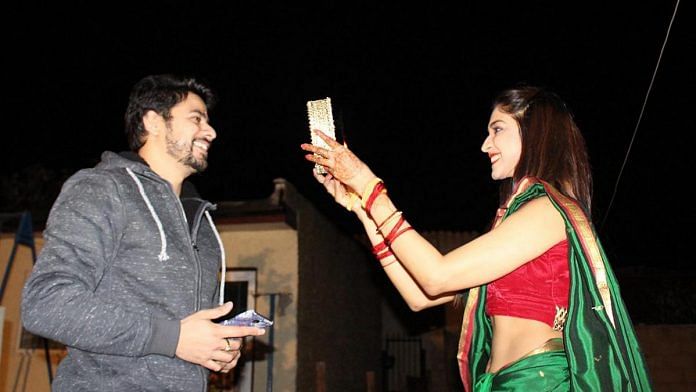New Delhi: To promote “unique Indian traditions” like Karwa Chauth and Bhaiya Dooj that celebrate relationships, the Union Ministry of Culture has proposed to compile a ‘National List of Intangible Cultural Heritage’.
“There are innumerable elements of ICH in India which deserve recognition,” according to the ministry’s five-year plan.
Since UNESCO accepts only one nomination per country every year for its World Heritage list, there is need to “move well beyond nominations and tentative lists of UNESCO” and make the country’s own National List of Intangible Cultural elements, the ministry’s vision document for 2024 states.
“Objective is to recognise and promote unique Indian traditions such as those that celebrate relationships between man and woman, such as between husband and wife (Karwa Chauth), brother and sister (Bhaiya Dooj, Raksha Bandhan), etc.,” the document, accessed by ThePrint, states.
Also read: Nripendra Misra to head Nehru Memorial Museum and Library
New institute and other proposals
The ministry also aims to create an ‘Indian Institute for Culture’ (IIC) — envisioned to be the premier national institution for training and skilling manpower in archaeology, conservation, museology and related fields.
The proposal, which is being reviewed by the Prime Minister’s Office (PMO), states that the IIC would be set up by an Act of Parliament “as an Institute of National Importance in the Culture Sector”.
All the existing educational and training institutes of the ministry, like the Institute of Archaeology, National Museum Institute, National Research Laboratory for Conservation of Cultural Property, and School of Archival Studies will be merged under the IIC.
The new culture institute is proposed to be housed in the existing 25-acre campus of the Institute of Archaeology in Greater Noida, and will offer graduate, post-graduate and research degrees, one-year diploma courses as well as short-term skill modules/courses.
“This will enhance supply of skilled manpower at all levels in a cultural economy and offer courses in all the related fields and disciplines,” the plan states.
The culture ministry is also planning an e-platform for consumers and service providers by aggregating art forms and artists, who will be graded by a body like the National Accreditation Board for Certification Bodies so that customers can make an informed choice about whose work they want to purchase. For this purpose, raw data from primary and secondary sources is already being collected.
ASI budget hike
An “authentic reconstruction” of 11 sites under the Archaeological Survey of India (ASI) with an emphasis on the Indus Valley Civilisation sites such as Dholavira and Rakhigiri is also being planned.
“Many monuments of ASI such as Hampi are incomplete, having been destroyed due to natural or man-made causes,” the document states.
The culture ministry will carry out reconstruction of these sites under its ‘Dharohar Darshan’ scheme through “various engaging digital modes such as augmented/virtual reality/360 degree videos, etc.” “This is the first such major initiative in the country,” the document states.
An Expression of Interest has already been floated for the initiative, and ASI has identified 19 Indus Valley Civilisation experts for the project.
“ASI will provide the content to the satisfaction of technology vendors, after which they will recreate the history of ASI sites and monuments under supervision of National Council of Science Museum,” it says. “The assets will be property of ASI and will be maintained by them once project is over.”
The project will be financed under the National Virtual Library of India, with IIT Bombay as the nodal agency.
The ASI’s budget will also be given a seven-fold increase over the next five years — from the current Rs 974.56 crore to Rs 6,769 crore.
The ministry also plans to finish off the construction of the Museum on Prime Ministers of India by March 2020. It has also proposed to enhance the area of the National Museum in Delhi and the Indian Museum in Kolkata — the areas of both have remained static since their formation in 1960 and 1814, respectively.
Also read: People visit Louvre for paintings, not TVs — Tushar Gandhi on digitised Mahatma images







Great work
We don’t need to depend on the EAST INDIA COMPANY of today the UN
ASI with so much money has no will to excavate KEELADI? Because it is not a HINDU Civilization? Why selectively reconstruct history? Why not reconstruct all the diverse Indian history of different parts of India? Will Indian rulers ever get out of Hindu-Sanskrit obsession?